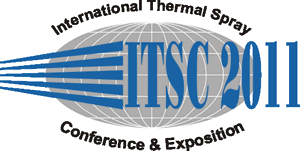
|
2575 |
|
Wednesday, September 28, 2011, Saal C2.2 9:50 AM Characterization & Testing 3 |
|
Life cycle assessment of surface preparation processes implemented before thermal spray |
|
Nicolas Serres / INSA de Strasbourg, France Sophie Costil* / LERMPS - UTBM, France Amina Lamraoui/ LERMPS - UTBM, France Cécile Langlade/ LERMPS - UTBM, France Christian Coddet/ LERMPS - UTBM, France |
|
Among the different coating technologies, thermal spray has a leading position because of its versatility. To protect materials from wear, corrosion, thermal flux, etc., an extremely wide variety of materials can be deposited on back materials implementing specific spraying processes. Moreover, from an environmental point of view, this technology tends to be more and more attractive in comparison with the conventional wet deposition processes that involve chemicals and effluents. Their better ecological level has already been demonstrated by the use of Life Cycle Assessment (LCA) methodology. Nevertheless, to establish the real environmental relevance of these processes, it is necessary to evaluate the real impacts at all steps. This point can be particularly interesting due to the successive steps imposed by the process. As an example, a surface preparation is most of the time necessary before the coating elaboration to insure the best contact between the molten particles and the surface. If several approaches can be developed to optimise such aspect as the conventional degreasing and sand-blasting step or water jet preparation, cryogenic treatment, laser ablation, laser texturation, several environmental impacts can be induced too. That is why this point can be particularly interesting to explore. The aim of this paper is to propose a LCA comparison of different surface preparation processes (degreasing, sand-blasting, laser ablation, laser texturation, cryogenic preparation) which tend to be used before thermal spray. The SimaPro software was used and the needs of materials, the energy and the corresponding emissions of each process, were converted to impact scores on human health, ecosystems, and resource conservation (fossil and mineral resources) by mean of the Eco-Indicator-99 method. |